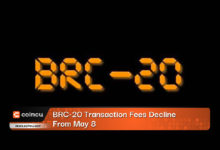What Is Interoperability and Can It Be Achieved in the Blockchain Space?

Disclaimer: The Industry Talk section features insights by crypto industry players and is not a part of the editorial content of Cryptonews.com.
Interoperability has been used a lot lately concerning the blockchain space. It simply means that two or more blockchains can co-exist and operate with each other.
The blockchain space is currently scattered, with many isolated chains operating on their own — a universe for itself. For example, if one NFT is made on one blockchain and the other on another, it’s difficult to swap the two NFTs, as they are based on somewhat different protocols. It’s similar to installing an Android app on an iPhone — it simply isn’t possible.
For example, when Ethereum came to be, its developers didn’t think of the idea that Ethereum’s blockchain would have to be connected with other blockchains in a way. In other words, Ethereum cannot operate with other chains, which is a major obstacle. The same goes for the Bitcoin blockchain, which made the first major breakthrough, as its mysterious creator, Satoshi Nakamoto, couldn’t have predicted how things would unfold. He didn’t know that many other blockchains would be used for much more than just cryptocurrencies.
But that is slowly changing, and many popular chains, including Ethereum and Bitcoin, are being redefined to allow for interoperability.
Cross-Chain Trading Is a Major Issue
Cross-chain trading is the ability to trade cryptocurrencies from different blockchains. The good news is that some projects can capitalize from the chains that are being re-developed with an eye toward interoperability.
Hey guys! We’re happy to introduce Cross-Dex Trading! Check out the details in the link below: https://t.co/bHdZB6NJco pic.twitter.com/AKZ3l1yHJu
— Primex Finance (@primex_official) July 18, 2022
One such project is called Primex, which is a cryptocurrency exchange that is currently in development. During its first phase, Primex will only be available on Ethereum, but the second version will also be deployed on networks compatible with Ethereum. That way, Primex users can trade cryptocurrency pairs across different chains.
Is the Future Interoperable?
All sides in the blockchain and DeFi spheres have realized that they can gain much more by making interoperability possible than by keeping blockchains separated. It’s safe to assume that the Bitcoin network won’t evolve towards interoperability shortly, as it is big enough to be self-sufficient. All other blockchains, including Ethereum, can only benefit from interoperability.
Therefore, it’s safe to assume that all new projects built with blockchain will be created with interoperability in mind, and the existing ones will evolve as much as possible to communicate with other blockchains.
Some projects are already focusing full-time on solving the interoperability issue, with varying success. The most successful companies at the moment are probably Cosmos and Polkadot, but we should also mention Harmony, Wanchain, Chainlink, Hybrix, and even Loom Network.
Interoperability as the Basis for Web3
Web3 or Web 3.0 has been one of the major buzzwords lately, and it refers to the new version of the internet, which will be entirely decentralized. Of course, to achieve that, we need all sides to cooperate, starting with making blockchains interoperable.
In a way, we need to create a network of decentralized networks to lay the foundations for the third version of the internet. This is likely to happen as blockchains are slowly opening up, but it seems it will take some time before it’s fully utilized.
According to most optimistic predictions, Web3 will start to manifest by the end of 2022, but it’s just a start, as there’s a lot of work to be done before it becomes a reality.
Final Thoughts
Interoperability is not a myth. It’s already happening across the blockchain and DeFi space, with many chains interoperable with many other chains. In fact, some are already so interlinked that they created a chain of chains, making it easy for users of all interoperable chains to make cross-chain transactions.
However, we’re still not there when it comes to full interoperability, where all blockchains are interoperable with each other. Is this even possible? Will we ever reach the Web3 utopia? It remains to be seen.






 Bitcoin
Bitcoin  Ethereum
Ethereum  Tether
Tether  USDC
USDC  TRON
TRON  Dogecoin
Dogecoin  Cardano
Cardano  Bitcoin Cash
Bitcoin Cash  Chainlink
Chainlink  LEO Token
LEO Token  Monero
Monero  Stellar
Stellar  Zcash
Zcash  Litecoin
Litecoin  Hedera
Hedera  Dai
Dai  Cronos
Cronos  OKB
OKB  Tether Gold
Tether Gold  Ethereum Classic
Ethereum Classic  KuCoin
KuCoin  Gate
Gate  Algorand
Algorand  Cosmos Hub
Cosmos Hub  VeChain
VeChain  Dash
Dash  Tezos
Tezos  Stacks
Stacks  TrueUSD
TrueUSD  IOTA
IOTA  Basic Attention
Basic Attention  Decred
Decred  Theta Network
Theta Network  NEO
NEO  Synthetix
Synthetix  Qtum
Qtum  Ravencoin
Ravencoin  0x Protocol
0x Protocol  DigiByte
DigiByte  Zilliqa
Zilliqa  Nano
Nano  Holo
Holo  Numeraire
Numeraire  Siacoin
Siacoin  Waves
Waves  Ontology
Ontology  Enjin Coin
Enjin Coin  Status
Status  BUSD
BUSD  Pax Dollar
Pax Dollar  Hive
Hive  Lisk
Lisk  Steem
Steem  Huobi
Huobi  NEM
NEM  OMG Network
OMG Network  Augur
Augur  Bitcoin Gold
Bitcoin Gold  Ren
Ren  Bitcoin Diamond
Bitcoin Diamond